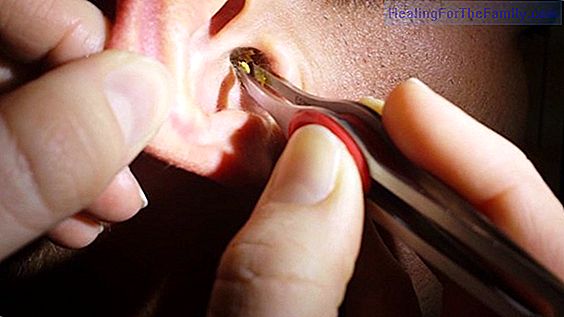Stains on the face during pregnancy
Pregnancy or fertility treatments can cause the appearance of spots on the face. The dark spots on the skin that usually arise as a result of pregnancy, are known by the medical name of chloasma or melasma . They usually appear around the fourth or fifth month of gestation and are located mainly in
Pregnancy or fertility treatments can cause the appearance of spots on the face. The dark spots on the skin that usually arise as a result of pregnancy, are known by the medical name of chloasma or melasma. They usually appear around the fourth or fifth month of gestation and are located mainly in the area of the forehead, cheekbones, nose and upper lip.
The main cause of the appearance of these spots lies in the important hormonal variations that occur in women during pregnancy and that lead to an increase in the production of melanin. This substance is responsible for the manufacture of the natural pigment that gives color to areas of the body such as hair or skin.
Chloasma or spots on the skin of the pregnant woman

The appearance of chloasma is not associated only with pregnancy. This condition can also be caused by an anovulatory hormone treatment, aimed at inducing ovulation when it does not occur naturally and we must resort to assisted reproduction treatments with hormonal stimulation.
In the same way that hormonal changes linked to pregnancy produce the appearance of spots on the skin, hormone treatments also increase the production of melanin, and, therefore, can also produce chloasma.
How can these spots of pregnancy be treated?
Stains in pregnancy generally affect those women who, in themselves, already have darker skin, because they are genetically predisposed to produce a greater amount of melanin. Still, it should be noted that according to a study by the American Academy of Dermatology (AAD), up to 70% of pregnant women have dark spots on the skin, also known by the nickname of 'masks of pregnancy '. So, if during pregnancy these types of marks appear, do not be alarmed because they do not involve any type of associated pathology that may affect the mother or the baby.
Sun exposure is another cause that can increase the appearance of spots during pregnancy or hormonal treatments, so it is advisable to avoid direct and / or prolonged contact with UVA rays, especially during the months of summer. In addition, it is also necessary to use sunscreens to prevent the harmful effects of sunlight, preferably a high protection or full screen, and adequate clothing that covers the most sensitive areas of the skin.
The spots on the skin linked to pregnancy in most cases disappear after giving birth. Despite this, it is recommended that in the following weeks, the mother continue to protect herself from excessive exposure to the sun.
If after a certain time, the chloasma continues without disappearing, it is advisable to go to a specialist doctor, in this case a dermatologist, who tells us what concrete treatment we can follow to solve our condition.












